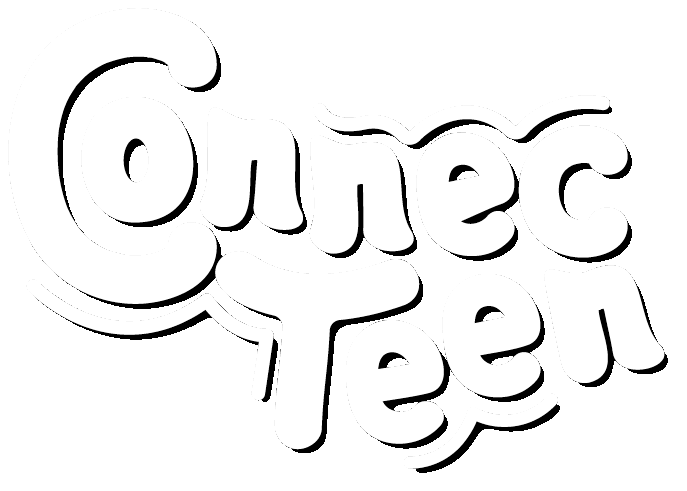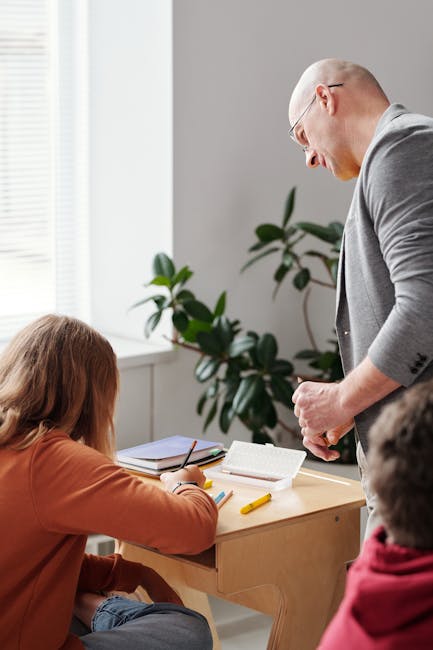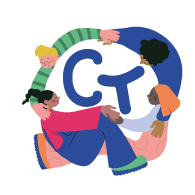Goal: To be able to communicate with other people through one single word that will leave a positive mark.

Equipment list for session 5:
- PC with Power Point
- Projector/TV to show Power Point
- Flipchart paper
- Flipchart stand
- Black/green/blue markers
- Pencils for the students*
- Notebooks for the students*
- Pencil sharpener*
*iPads or similar can be used if the students can bring their notes to every session
Wellcome – Time: 2 min
Trainers will say to the group:
Welcome 😊 What is something you remember from last session or want to share about your home assignment?
Today’s session focuses on Social Well-being—how our relationships and connections with others impact our overall mental health.
*If you have 1 hour let the students share experiences from doing their home assignment.
Part 1: Brainstorming Social wellbeing – Time: 5 min
Instructions for Trainers: On a flipchart, whiteboard or digitally, invite the students to brainstorm freely everything they associate with social well-being. Remember to write exactly what the students say, and do not rewrite them in your own personal interpretation.
Part 2: Exercise / “Yes, and” – Time: 20 min
Purpose:
- Work in pairs, a positive spiral and connection when you only focus on what you like.
- A chance to practice saying your own ideas out loud, express and use your creativity.
- Replacing the word “but” with “yes, and” can make a meaningful difference—not only in how participants express themselves, but also in how they are received by others.
- This simple shift in language encourages more open, respectful, and constructive communication. It helps participants listen more actively and respond with curiosity rather than contradiction.
- By becoming more aware of their attitude and choice of words, participants begin to notice important nuances in everyday conversations. This change can lead to:
- Greater openness
- Less judgment or prejudice
- A more positive and solution-focused mindset
- Increased peace of mind
- More decisive and effective interactions
- The way we speak shapes the way we think—and how others relate to us. A small change like replacing “but” with “yes, and” can open the door to more meaningful, collaborative communication.
Necessary preparations for the trainers:
Prepare and practice the three different demos:
Example demo 1: Trainer 1 is enthusiastic and says to Trainer 2: I have a new sweater. Do you like it?
– Trainer 2 replies: Yes, it is beautiful, BUT it is not really your style.
Example Demo 2 with “YES, and…” where you use the same example as in demo 1, and now answers with Yes, and… instead.
– Trainer 1: I have a new sweater. Do you like it?
– Trainer 2: Yes, and what I like about it is how the colors matchyour eyes.
Demo 3 – Dream House (Mirrors how the participants will do the exercise)
–Trainer 1: Now we are going to build our dream home. The house is in the middle of the woods on a hill, with lots of space, and a view to the ocean.
–Trainer 2: Yes, and what I like about what you say is that the house will have a roof top terrace where we can hunt from. We can gather all the food we need from the woods and be self-sufficient.
–Trainer 1: Yes, and what I like about what you say is that we will need a big kitchen! It will be an open floor plan, with a kitchen island, a separate herb garden and a slide from the middle of the room to a preheated pool below.

Step 1:
Start with Demo 1 Yes, but… without any other introduction.
After demo 1 ask the class:
- What happens when you give a compliment, and continues the sentence with “but…”
- What happens when you acknowledge something good about a situation, and then ending the sentence with “but…”
- What happens when someone suggests something and you start your reply with yes, but… = everything that has been said before BUT will be forgotten
Step 2:
- Do Demo 2 Yes, and…
- After demo 2 ask the group what they noticed – which word made the difference? What effect does the word “AND” have in a conversation?
Step 3:
Demo 3 – build the Dream House together. This is a demo of how the participants will do the exercise.
Step 4:
- Put two and two together.
- Tell them what to do:
- You will now build your Dream House together.
- The one with the longest hair will start to say where the Dream House is located and a short description of how it looks (use your imagination)
- The other person answers: “Yes, and what I like about what you are saying is…” and adds your own ideas.
- Both of you will start each reply like this: “Yes, and what I like about what you are saying is…” and then add your own idea
- You both need to have long sentences, so your partner has something to build on
- Albert Einstein said “Imagination is more important than knowledge” – use your imagination while practicing
- Remember; There will ALWAYS be an itty-bitty part of what your partner is saying that you can build on.
- Let the students continue the conversations for several minutes.
- When it is time, stop them, thank them and tell them to find their seats again.
Closure/Summary – Time: 10 min
- If time, ask the group: What is the purpose of practicing Yes, and? Then say:
- The point is to build the conversation on something they liked that the other person said.
- This exercise exaggerates this point, and that’s how it should be.
- It’s the principle they will learn, and when they practice this in their everyday life, they will adapt it so that it feels more natural in the conversation.
- The goal is to reduce the number of times we say “yes, but…” Because that response will always tear down or stop the conversation.
- We want the participants to have a broader foundation to stand on to open a dialogue and create constructive communication-situations.
- Additionally, it is a fun way to interact with someone else. They use multiple parts of the brain, and it will obviously bring about new solutions and options.

Home assignment – Time: 8 min*
Introduction for the students: Purpose of a home assignment is that if you want something new in your life, you have to do something new. When you take action between each session, change will happen.
Assignment: Practice, and exaggerate your use of Yes, and in every conversation, you are a part of from now and until we meet again. Speak it out loud 😊
Acknowledge the class/students – Time: 2 min
Find something from today’s session you can acknowledge before you say goodbye.
